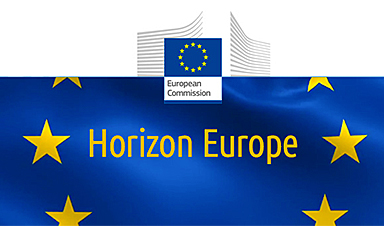EU Research Commissioner Carlos Moedas sent the European Parliament and member states a €94.1 billion research budget proposal on Thursday outlining increases in basic science spending and a blueprint for a new innovation council to spawn transformative inventions.
The Commission’s budget breakdown for its next research programme, Horizon Europe, running between 2021 and 2027, devotes the biggest share of funding, €52.7 billion, to a series of projects to tackle climate change, boost digital technologies, improve food, handle other ‘global challenges’ and boost industrial competitiveness.
The balance of the €94.1 billion will go to fund fundamental science and innovation. The total for Horizon Europe represents about 10 per cent of government research funding across the EU.
“We’re aiming higher than ever,” the Commissioner said in an interview Wednesday. Horizon Europe follows the current Horizon 2020, which has provided around €77 billion in research funding. From the start, its competitions have been extremely popular and sometimes heavily over-subscribed.
Moedas is obviously thrilled about the proposed funding increase, which comes at the expense of EU investment in agriculture and poorer regions, the two main staples of the Brussels budget.
His colleagues can’t help but feel a little envious of the budget increase. One commissioner, riding a lift with some journalists in the Berlaymont on Wednesday, said: “When he goes to countries, he goes with money, while I go to issue moral imperatives.” Another, vice-president Jyrki Katainen, said on Thursday that Moedas was “lucky” to have his hands on the portfolio at this moment.
All the numbers announced by Moedas assume no contribution from the UK, although the country has expressed a wish to access the next EU research programme after it has left the EU next March, in exchange for a membership fee, and a large say in how priorities are set. Membership has still to be negotiated, though.
He promises several novelties in Horizon Europe, including ‘moonshot’ missions and new rules to ease foreign access.
Missions, which are not specified in the programme, will get somewhere between €5 – €10 billion, the Commissioner said. “It’s very difficult to create missions today for 2021-2027. So we are just going to set down criteria,” Moedas said. “It would be a little bit arrogant to define the missions now.”
Nevertheless, he gave two examples of possible missions that he feels the European public would get behind and support: finding a cure for Alzheimer’s disease, and creating zero-carbon boats.
The desire to create missions is also borne out of a niggling feeling the Commissioner has that there is not enough awareness or credit today for EU-funded research. “When IMI [the EU-funded Innovative Medicines Initiative] helped create a new Ebola vaccine in 2015, nobody knew it was us,” Moedas said.
Brussels also wants to tighten and, in its words, streamline the management of public-private research partnerships. “We have too many names, too many acronyms,” Moedas said.
Some ingenuity with numbers means the Commission is claiming a total research budget of €100 billion.
Image Credit: EC Horizon 2020
News This Week
AI Helped Scientists Stop a Virus With One Tiny Change
Using AI, researchers identified one tiny molecular interaction that viruses need to infect cells. Disrupting it stopped the virus before infection could begin. Washington State University scientists have uncovered a method to interfere with a key [...]
Deadly Hospital Fungus May Finally Have a Weakness
A deadly, drug-resistant hospital fungus may finally have a weakness—and scientists think they’ve found it. Researchers have identified a genetic process that could open the door to new treatments for a dangerous fungal infection [...]
Fever-Proof Bird Flu Variant Could Fuel the Next Pandemic
Bird flu viruses present a significant risk to humans because they can continue replicating at temperatures higher than a typical fever. Fever is one of the body’s main tools for slowing or stopping viral [...]
What could the future of nanoscience look like?
Society has a lot to thank for nanoscience. From improved health monitoring to reducing the size of electronics, scientists’ ability to delve deeper and better understand chemistry at the nanoscale has opened up numerous [...]
Scientists Melt Cancer’s Hidden “Power Hubs” and Stop Tumor Growth
Researchers discovered that in a rare kidney cancer, RNA builds droplet-like hubs that act as growth control centers inside tumor cells. By engineering a molecular switch to dissolve these hubs, they were able to halt cancer [...]
Platelet-inspired nanoparticles could improve treatment of inflammatory diseases
Scientists have developed platelet-inspired nanoparticles that deliver anti-inflammatory drugs directly to brain-computer interface implants, doubling their effectiveness. Scientists have found a way to improve the performance of brain-computer interface (BCI) electrodes by delivering anti-inflammatory drugs directly [...]
After 150 years, a new chapter in cancer therapy is finally beginning
For decades, researchers have been looking for ways to destroy cancer cells in a targeted manner without further weakening the body. But for many patients whose immune system is severely impaired by chemotherapy or radiation, [...]
Older chemical libraries show promise for fighting resistant strains of COVID-19 virus
SARS‑CoV‑2, the virus that causes COVID-19, continues to mutate, with some newer strains becoming less responsive to current antiviral treatments like Paxlovid. Now, University of California San Diego scientists and an international team of [...]














Leave A Comment